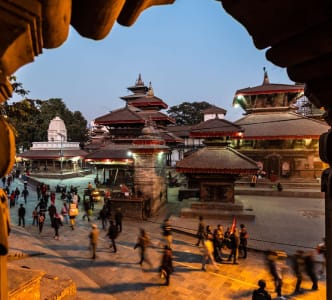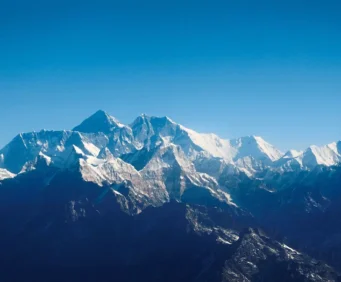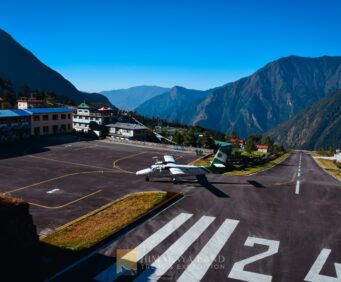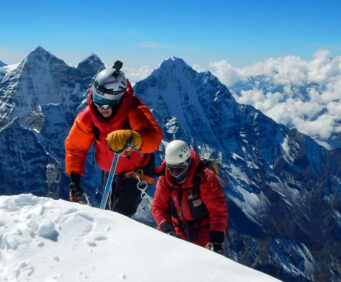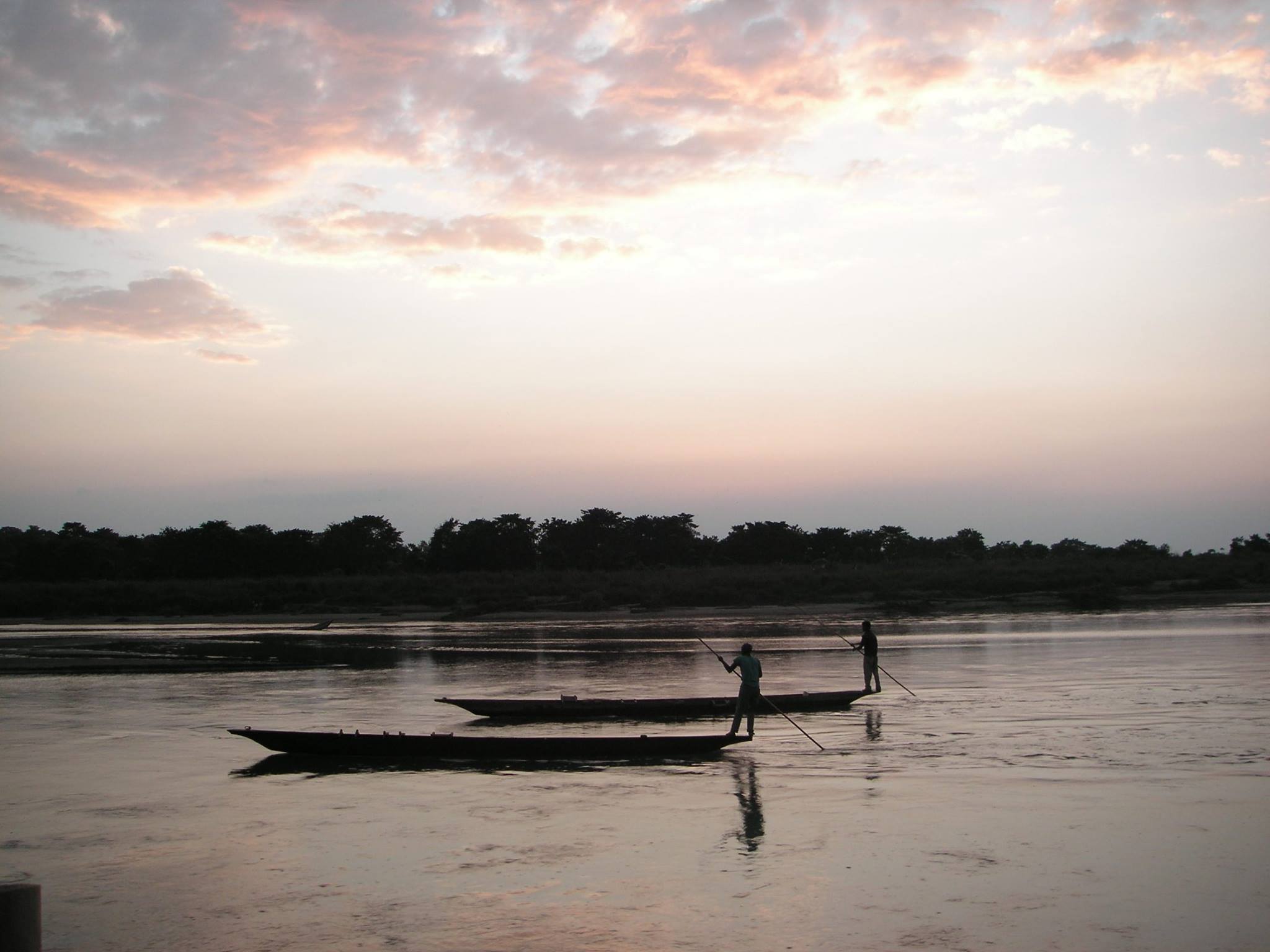
Major Tourist Destinations in Nepal
5th May, 2024 - Posted By: Himalayan AbodeNepal is a very exceptional place. This small, mountainous country has a staggering variety of tourist attractions for those who enjoy the outdoors, Nature, history, and spirituality. The Himalayan mountain range, located in Nepal, is a hiker’s and outdoor enthusiast’s dream come true. Mount Everest, the most famous mountain in the world, is located in this range. With a height of 8,848.86 meters above sea level, it is the tallest peak in the world. Religious monuments that have been built as sacred locations for pilgrimages can be found in these towns. The following tourist destinations in Nepal are well-known for good reason—they represent the country has best and beg to be seen.
Everest Base Camp Trek
Perched atop the globe, Mount Everest serves as a breathtaking reminder of our meager place in it. Sherpas and mountaineers put in a lot of labor at the foot of Everest to get ready for their climb.
To guarantee safe journeys, holy sites are worshipped at, and pujas, or religious rites, are held between April and May. Everest Base Camp welcomes visitors who want to experience the well-organized chaos of a journey that doesn’t necessarily guarantee a pleasant finish. Base camp visits via helicopter are common, as is the “Everest Base Camp Trek,” which has grown in popularity recently.
This strenuous journey, which can take up to three weeks just to get to the base, offers participants a limited taste of the grueling struggle mountaineers may encounter when conquering Everest.
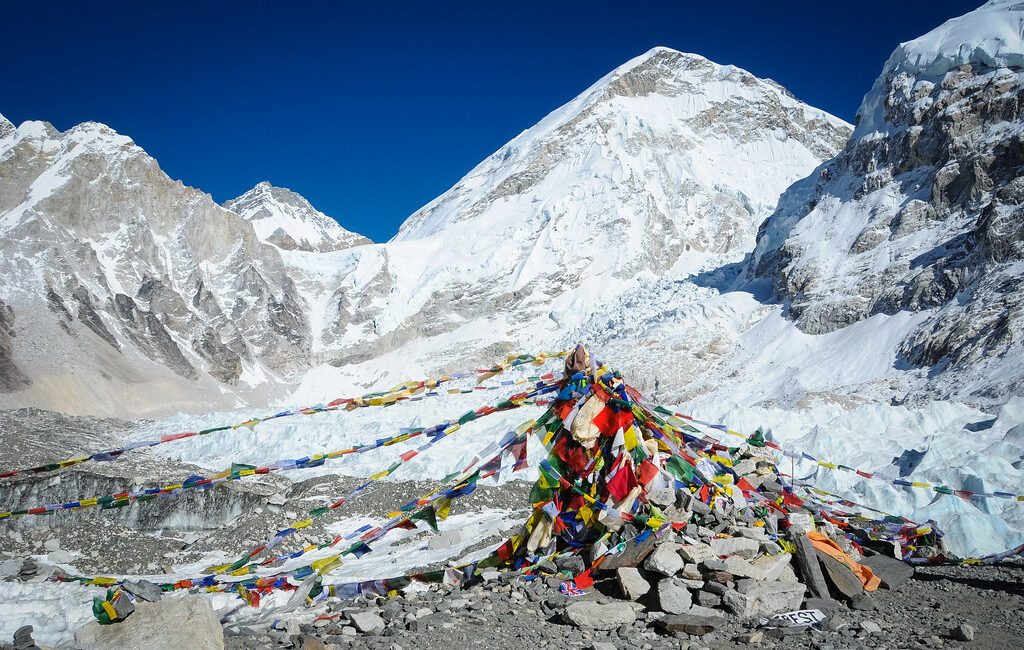
Sagarmatha National Park
Mount Everest and the other tallest mountains in the world are found in Sagarmatha National Park. But this park of towering mountains is much more than just the breathtaking scenery. Some of the rarest and most remarkable creatures on Earth can be found in the mountain ranges: the Himalayan black bear, the elusive snow leopard, and the red panda.
Numerous musk deer roam freely throughout the park, home to hundreds of bird species. The Sherpas, who live in nearby villages, frequently attend worship at the sacred locations strewn around the park. Visitors should, however, exercise caution due to the high altitude and take the necessary precautions to avoid altitude sickness.
Namche bazaar
Since Namche is where most people begin their journey to climb the highest mountain in the world, it is frequently referred to as the “gateway to Everest.” On the other hand, Namche’s bazaar has been a hub of trade for millennia and is well-known for its yak cheese and butter.
These days, the bazaar has everything one might need for everyday living in the village or a hike into the Himalayas. The Namche Bazaar is the best in the Everest region. Most individuals find it difficult to even get to Namche.
Annapurna Sanctuary trek
The only way to reach the mysterious Annapurna Sanctuary is via trekking for 10 to 15 days. It is surrounded by mountains and is on a high glacial basin. For this attraction, though, the journey is more important than the goal.
Although the hike ends in the middle of the Annapurna Sanctuary, the whole journey gives breathtaking vistas of the surrounding Himalayan mountain range. Along the way, homestays are used by trekkers, who frequently eat with local families.
Because the paths are well-marked and interspersed with settlements, this hike is among the few that can be completed without a guide. The locals consider the Sanctuary to be sacred, thus guests should act appropriately when they are there.
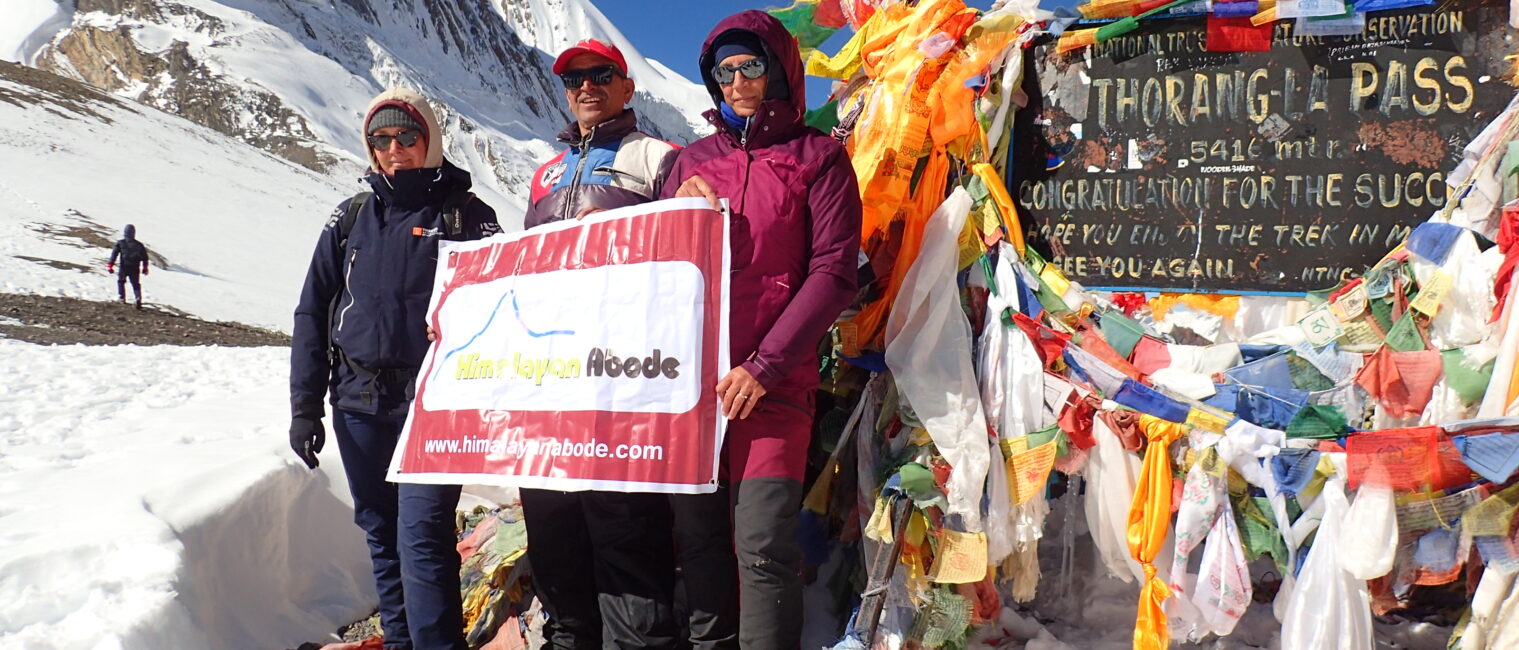
The best place to visit in the Kathmandu Valley of Nepal
1. Pashupatinath Temple
The most revered Hindu temple in Nepal, the Pashupatinath Temple, is located on the banks of the Bagmasti River. It is regarded as one of the most significant religious locations in Asia and resembles a complex rather than a temple. The location, which has multiple shrines, temples, courtyards, monuments, and libraries, is well-liked for cremations.
This is because the temple is devoted to Lord Shiva and is situated on a riverbank. This procedure has been carried out for thousands of years in this site and other parts of South Asia, often surprising visitors.
2. Boudanath Temple
Boudhanath Stupa is situated not far from Kathmandu, the country’s capital. Beautiful views of Kathmandu and the surrounding valley can be seen from the stupa. One of the biggest Buddhist stupas in the world, it was most likely built following the Mughal conquests in the fourteenth century. Around the stark white and gold monument, hundreds of colorful prayer flags billow in the breeze.
Four pairs of eyes, symbolizing the Buddha’s all-seeing, all-knowing nature, are located at the foot of the stupa. Around the Stupa live a sizable population of Tibetan Buddhists, many of whom are refugees from their native country.
3. Lalitpur, Patan
Patan and Kathmandu are separated only by the hazy Bagmati River. It is still frequently referred to by its original Sanskrit name, “City of Beauty.” Some of Nepal’s outstanding examples of traditional architecture and Newari craftsmanship may be found in the city’s historic district.
The Golden Temple, Mul Chowk, Patan Museum, Krishna Mandir, and Sundari Chowk are some of the most well-liked sights in the city. The historical highlights of this charming tiny town are all centered in the old portion of the city.
4. Kathmandu Durbar Square
In Nepalese, durbar means royal palace, and that is just what Durbar Square is. The historic imperial palace of the vanished Kathmandu Kingdom is situated in front of the palace plaza. Nepal was made up of numerous smaller kingdoms, including the one in Kathmandu before it was united in the middle of the 18th century.
Kings were crowned and regal proclamations were made in these Durbar Squares across the nation. Particularly striking is Kathmandu’s Durbar Square, which features some of the best traditional architecture and Newari-style artwork in the nation.
The area is surrounded by shrines, a former elephant stable, turrets, and other temples in addition to the palace. Sadly, the 2015 earthquake severely damaged a number of the structures, but restoration work is now underway to return them to their former splendor.
5. Bhaktapur Durbar Square
You can travel back thousands of years to visit Bhaktapur’s regal square. Because there are fewer tourists and souvenir shops, it provides a more sedate option than Kathmandu’s Durbar Square. The little stores that line the plaza appear to be less dependent on tourists and are happy to show off how they make their regional handicrafts, including clay pottery and carvings.
The area and its numerous historic structures and temples are filled with magnificent examples of detailed carvings in stone or wood. The Durbar area in Bhaktapur is entirely free to enter, although some of the historical sites and attractions that surround the area may have an admission cost. The Mini Pashupathi Temple, Golden Gate, Lion Gate, and 55 Window Palace are a few of these attractions.
The above sites showcase the rich history, art, and architecture of the Kathmandu Valley.
Outside the KTM Valley-Tourist destinations in Nepal
Fewa Taal (Lake)
The second largest freshwater lake in Nepal, this one is located close to Pokhara and reflects the stunning Annapurna mountain range in its waters. With their beautiful views of the mountain range on the other side of the lake, most restaurants and hotels face the other direction.
Mountains covered in snow are common throughout most of the year. Development is not possible on the other side of the lake because of how densely forested and hilly. The sacred Durga temple is located in the middle of the lake. This pagoda, known as the Tal Barahi Temple, is well-liked by both tourists and pilgrims and is only accessible by bus.
On the other hand, lakeside water sports are quite popular. Around the lake, several shorter walks and treks provide breathtaking views of the surrounding landscape and the mountains.
Bhote Koshi river
The Sun Kosi River rises in Tibet and has an upper course known as the Bhote Koshi. Calling all thrill-seekers: Bhote Koshi River rafting is the ideal diversion from Nepal’s sightseeing and hiking for anyone seeking some heart-pounding action.
The steepest river rafting in all of Nepal is available in Bhote Koshi. It is one of the best tourist destinations in Nepal for rafting and watering. Nestled between mountain ranges, it is only a few hours’ drive northwest of Kathmandu, close to the border between Nepal and Tibet. If the thrilling Level 5 rapids on the glacier-fed river aren’t enough action for you, there’s also an exhilarating bungee jump situated intimidatingly high above the river.
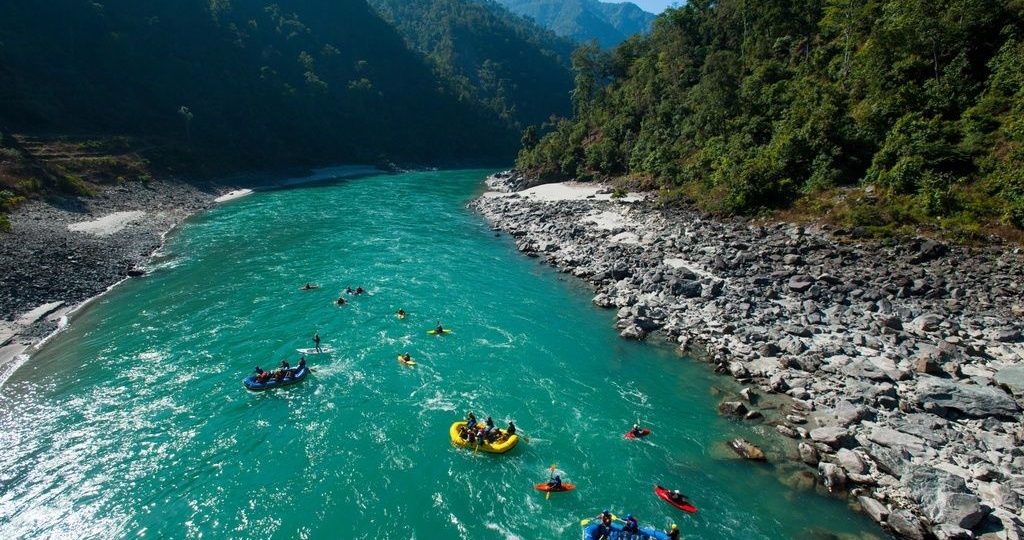
The world’s highest free fall is here. The bungee is incredibly safe despite the nature of the sport; its designers, Kiwis, created the renowned Queenstown bungee jump in New Zealand.
Chitwan National Park
Chitwan National Park is a UNESCO World Heritage Site that protects a significant portion of the Terai region’s biodiversity, including endangered species like the Bengal tiger, one-horned rhinoceros, and gharial crocodile. It is one of the best tourist destinations in Nepal for Jungle safari.
Renowned for harboring some of the world’s last surviving populations of one-horned rhinoceroses, Chitwan National Park. Remarkably, though, this national park does not save just one iconic species; reports of the renowned Bengal tiger are common in this region.
Moreover, sloth bears and leopards prowl the woods and woodlands, and gharial crocodiles guard the waterways. Because of these creatures, the park is known as “the second Serengeti” due to the abundance of opportunities for wildlife viewing.
This region features steep mountain ranges, deep jungles, and expansive meadows. The scenery is exceedingly lush. A popular method to visit the park is on a safari, and trips that last the entire night are also available.
Lumbini
- The Birthplace of Lord Buddha. It is a tourist attraction in Nepal.
- Lumbini is the birthplace of Siddhartha Gautama, the historical Buddha. It is an important pilgrimage site for Buddhists from around the world.
Some of the hidden gems tourist destinations in Nepal
Begnas and Rupa Tal
Pokhara gained notoriety as a result of Phewa Lake, however, these days it’s overrun with an increasing number of lodgings, dining options, nightclubs, and retail establishments. However, two similarly lovely but less well-known lakes with minimal overdevelopment that could overwhelm Pokhara are only 15 kilometers to the east.
Begnas Tal and Rupa Tal are said to be husband and wife in the local folklore, and if you toss something into one, it will ultimately turn up in the other. The larger of the two, the former is surrounded by incredibly steep terraced hills, while the smaller, less well-known one is tucked away in a verdant valley directly to the south.
Kahun Dada
Hikers from all over the world flock to the summit of Sarangkot, a tiny mountain just west of Pokhara, to experience the breathtaking views. Alternatively, one may find almost as spectacular views in complete seclusion at the top of Kahun Daada Hill, on the eastern outskirts of the city. There are numerous interesting cultural sites along the walk leading up to this viewpoint. It is also one of the best tourist destinations in Nepal for sightseeing.
A meticulous ascent of more than 200 stairs leads to the complex Manang monastery on the outskirts of the city, which is home to about 70 Buddhist monks and offers some breathtaking vistas. Situated a short stroll from the monastery and a few hundred stairs up, the Hindu Bardakali temple is a popular – and appropriately dramatic – location for weddings. It is encircled by blooming bougainvillea.
Manakamana
Manakamama Devi, the most well-known wish-granting temple in Nepal, draws a significant number of pilgrims from India and within the country, but not many from beyond. The only cable car in Nepal (www.chitawoncoe.com.np) takes you quickly 2.8 km through the clouds to the summit temple.
Animal sacrifices are common here, so you might find yourself in a gondola with a tethered goat, pigeon, or chicken. Following disembarkation, there’s a lively little area surrounded by guesthouses, tea shops, and groups of merchants selling devotional goods like coconuts, flower garlands, and shawls with gold trim.
Gorkha
Although Gorkha, the historical town and ancestral home of Nepal’s previous royal family, ought to be a must-visit for anybody visiting the country, very few international visitors ever make it there.
The majestic eighteenth-century Gorkha Durbar is without a doubt its highlight. To get there, one must up a steep flight of stone steps from the lower town, which takes forty minutes. It is best done early in the morning before the heat builds up.
The Durbar is a true architectural and engineering marvel; it is a brick-and-wood structure balanced precariously on a high, narrow ridge. It is half palace, half temple. From here, Prithvi Narayan Shah united the valley kingdoms of the nation to form modern-day Nepal.
Conclusion
Nepal is filled with natural beauty that you can explore. There are still a lot of places that you can visit during your travel to Nepal. Yes, there are a lot of places that you should not miss when you are in Nepal. But, these are some of the major tourist destinations in Nepal that you should visit to have the best experience of Nepal.
Recent Posts
